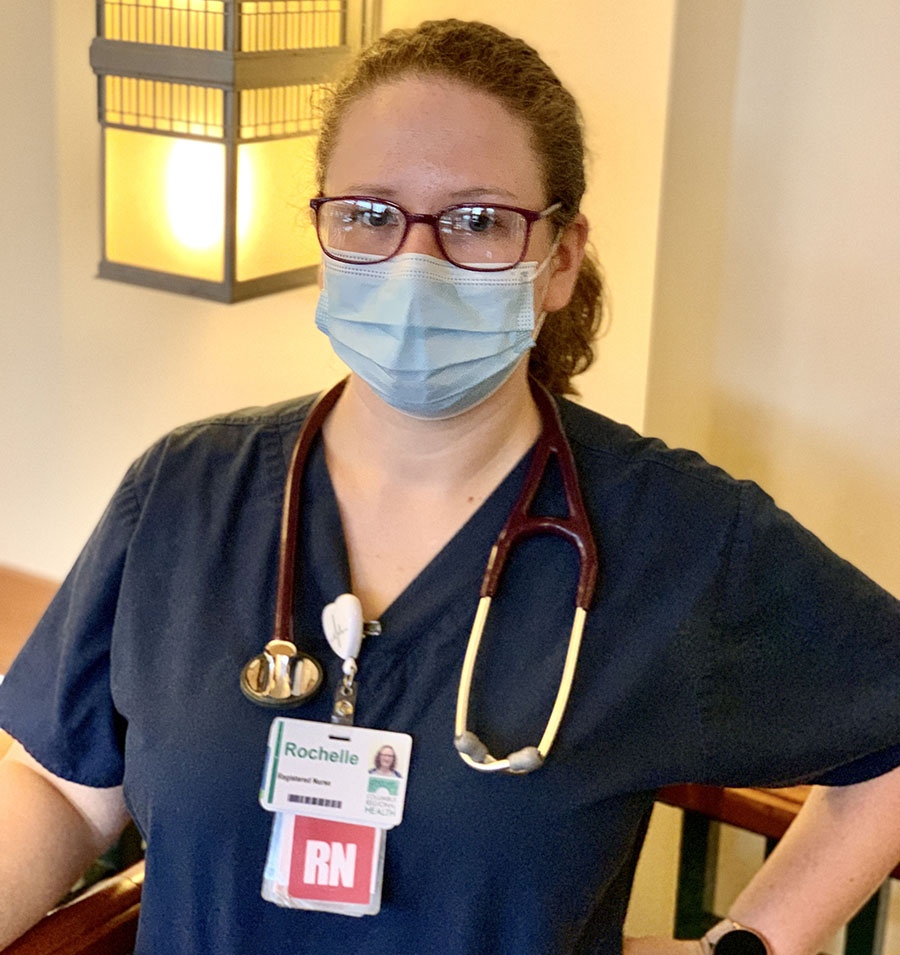COVID in the ICU Through the Eyes of a Critical Care Nurse

“We got to watch him walk out the front door with his family after so many weeks of really not knowing whether or not he would be able to go home,” CRH critical care nurse Rochelle Vaughn said, referring to a patient who had spent six weeks at Columbus Regional Hospital due to severe COVID-19 symptoms before being discharged.
Despite not having previous health issues, due to the severity of his condition, the patient was intubated, required a tracheostomy, and received nutrition via a gastric tube. Clinical staff also placed him in prone position many times to help him breathe. The team worked tirelessly, and after many weeks they were able to wean the patient off a ventilator. He received rehab services until he was finally able to go home. “That was really exciting,” said Rochelle. “These patients are here for so long that we all tend to get to know them.”
For Rochelle, the decision to become a critical care nurse was based on an experience when her father spent many weeks in an intensive care unit (ICU). She was in nursing school and looking for a purpose. “I wanted to feel like I was doing something important,” she said. While her father was in the ICU, Rochelle saw firsthand the impact the care team made. “I felt like they were kind of in the heat of it and doing the most good,” she said.
Rochelle said that while the number of caregivers is limited in a patient’s room to help prevent COVID transmission, nurses on the floor keep nursing partners outside the room to get necessary supplies, to be ready to help with a rapid intubation, and to communicate with a physician outside of the room. For months, team members, Rochelle referred to as “dofficers,” would help with donning and doffing (putting on/taking off) PPE, as well as sanitizing hoods and work areas for reuse. Due to limited supplies, PPE hoods that protect caregivers’ faces were initially shared after being sanitized. “It’s a lot of work just to get into the room,” she said.
Caring for patients with COVID-19 can be emotionally and physically exhausting. For the most critically ill patients, it takes a highly coordinated approach among physicians, nurses, and support staff to care for the patient. Because many COVID-positive patients have long hospital stays, Rochelle said that it has been important to get to know their families who are at home. In the ICU, these patients are often intubated or on very high oxygen requirements, making it unsafe to have additional people on the floor, so visitors are not allowed (with certain exceptions). “Making that time to talk to family even when they can’t be here has kind of changed how we practice nursing,” she said. “We find time to include them in the care when they’re not here – to talk on the phone or use an iPad. It’s more important than ever to build that bridge of communication.”
Rochelle said there is a great team dynamic on the unit, and the team really trusts each other. That teamwork trust has been especially important during the pandemic. “I love the ICU because there are a lot of hopeful stories where we can turn someone around from very, very sick and send them home in a few weeks. It feels good to do that kind of work,” she said.

